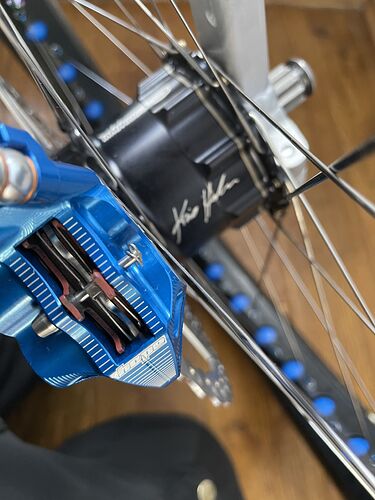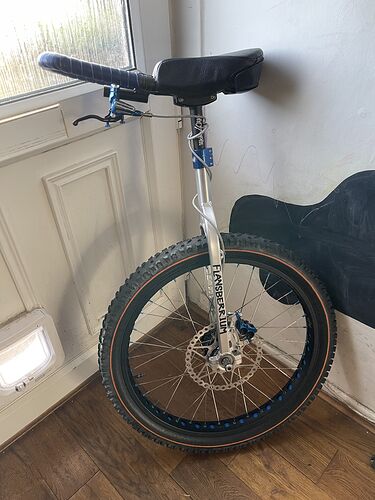Thanks Maxence - hope it arrives soon!
Here’s some snippet answers to my email from Florian. I don’t feel it would be fair or polite to copy the whole email on this public space, but the information provided is key and with the greatest respect should have been mentioned in the manual - so in the interests of us all knowing what’s what, I’m sharing:
A) Rotor Alignment with spacers / washers
Answer:
Putting any spacers under the brake disc is of course possible. We have specially made a positive fit between the brake disc and housing, so that the load does not sit on the screws.
 Taking inspiration from what @Hammer did and with his advice I’m using these M4x12 washers
Taking inspiration from what @Hammer did and with his advice I’m using these M4x12 washers 
B) Axle Bolt Rounding
Response:
That the axle bolt made of one of the toughest materials available deforms is not possible. You should first push the shift shaft through so that the key grips in its full depth. With a good wrench and proper fit, 55Nm is no problem. We have over 30 years experience with this material and torques. 10’000s of bicycle hubs had even smaller Allen size and were tightened with 55Nm.
I’ll leave this one as it stands - as I need to follow up on this point via email as I did get deformation as I was using a palm length ratchet wrench using just my arm strength, so do not believe I was anywhere near 45nm.
(TIP - See above, earlier post: rubber mallets  )
)
C) Spacers For Cranks
Response:
Why use extra spacers to contact the crank stop rings? We make these rings so that when the cranks are mounted repeatedly and get closer and closer to the center of the hub, they protect the ball bearings behind. Normally they have no function.
I think we have two differing schools of thought here. Meaning that with normal unicycles one has to have the crank make contact with the crank stop to form a tight fit. In the new hub’s manual the crank stops are labelled pressure rings, so I think the school of thought for schlumpf hubs is that the rings are there to protect the hubs bearings as and when a cranks gets close and presses it. From the previous versions of schlumpf hubs that never had these, cranks were having problems creeping inwards I believe - but of course there were no stops, so people just put them on, torqued them tight and hoped they’d stay put and not develop any play. (My old 200 series cranks as solid as a rock so it can work)…
But basically the answer here is that we can put spacers there but that that isn’t really the focus of these pressure rings, so there’s no aim to have the cranks touch.
Feels odd from the normal perspective of putting cranks on, but there it is. I’m more concerned about the rounding bolt issue getting cranks on than if at some stage cranks wear a bit and need more tightening or if spacers need adjusting / using more.
D) 180 Rotor Clearance Problems
For this one I’ve had some comments back but will need to put a pin in it as it’s a bigger topic that doesn’t feel fair to widely air on the forum like this. The gist is however that all rotors should work, but naturally it seems like 180s have serious problems and I’d not like to own a 160!…
But this one needs more unpacking to get clarity on… probably by third parties.
Right, that’s enough of that - I’ll probably start drafting up my own manual based off of all the points that have come up thanks to this wonderful little mono-mania corner of the interwebs 
![]() @jaco_flans
@jaco_flans


